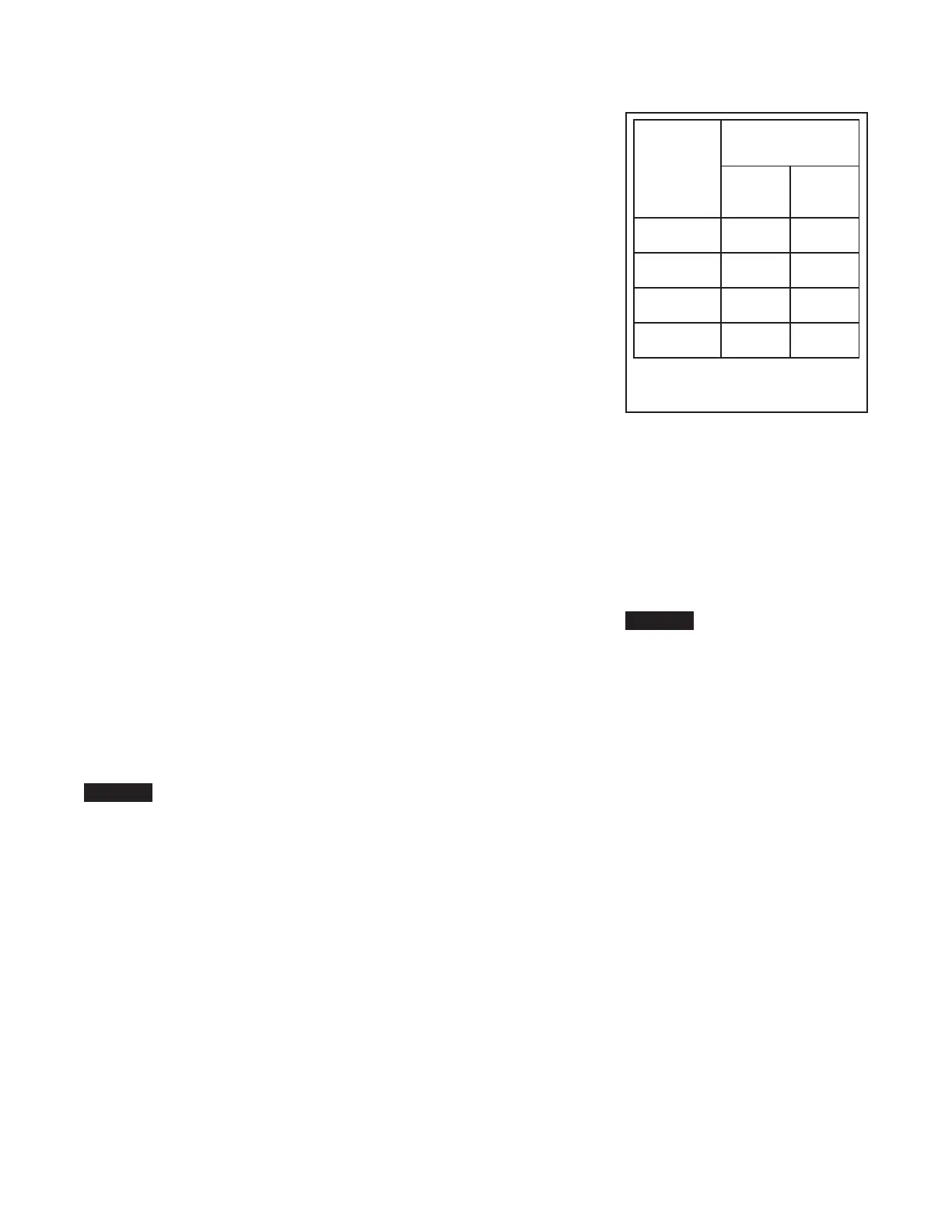TFP1326
Page 17 of 22
Step 6. Reset the electric detection
system in accordance with the manu-
facturer’s instructions to de-energize
the Solenoid Valve (N), and proceed
as follows:
• Water should cease draining from the
Solenoid Valve (N).
• Pressure will then build up in the
DV-5A Diaphragm Chamber.
• After system pressure is restored
in the DV-5A Diaphragm Chamber,
inspect the Solenoid Valve (N) for
leaks at the drain tube. Any leaks
must be corrected before proceed-
ing to the next step. The Solenoid
Valve (N) discharges water into the
riser and must be drained at the con-
cluson of this test.
Step 7. Partially open the System
Main Control Valve (B). Slowly close
the Main Drain Valve (D) as soon as
water discharges from the Main Drain
Valve (D). Observe the Automatic Drain
Valve (F) for leaks. If there are leaks,
determine/correct the cause of the
leakage problem. If there are no leaks,
the DV-5A Valve is ready to be placed
in service and the System Main Control
Valve (B) must then be fully opened.
Internal Valve Inspection
Once every five years during the annual
operational test procedure and prior
to the DV-5a Valve being reset and
with the DV-5a Valve de-pressurized,
the interior of the DV-5a Valve must
be cleaned and inspected for wear
and damage. Damaged or worn parts
must be replaced. (Replacement of the
Diaphragm every ten years is recom-
mended, or more frequently if inspec-
tions and/or wear and tear warrant
more frequent replacement.)
NOTICE
The Diaphragm Cover may be removed
between Steps 4 and 5 of the reset-
ting instructions, since at that point the
DV-5a Valve should be de-pressurized
as evident by a zero gauge reading on
the Diaphragm Gauge (K) and Water
Supply Gauge (J), as well as no water
discharging from the Automatic Drain
Valve (F).
Ensure that the Diaphragm Supply
Valve (P) and the System Main Control
Valve (B) are closed before removing
the cover.
To perform internal valve inspection
between Steps 4 and 5 of the Valve
Setting Procedure, remove the dia-
phragm cover as follows:
Step 1. Close the Inverted Flare Shut-
Off Valve (R).
Step 2. Remove the Copper Tube
Fitting between the Diaphragm Supply
Valve (P) and the Inverted Flare Shut-
Off Valve (R).
Step 3. Loosen the union securing the
Solenoid Valve (N).
Step 4. Loosen and remove the union
between the Diaphragm Cover and the
trim and remove the trim.
Step 5. Remove the Diaphragm Valve
Cover hardware, then slowly remove
the Diaphragm Cover and perform
internal valve inspection. Clean the
valve interior and replace parts as
necessary.
After cleaning and inspecting valve
interior, and replacing parts as nec-
essary, reinstall the Diaphragm Cover
by completing the following steps to
assure the Diaphragm Cover Fasteners
are uniformly and securely tightened.
Step 1. With reference to Figure 1,
ensure that the Diaphragm is properly
oriented and that the proper hardware
arrangement is utilized when assem-
bling the Diaphragm Covers. The hard-
ware arrangements differ depending on
the size of the DV-5a Valve.
Step 2. By first using the Long Hex
Bolts, support of the Diaphragm Cover
will be provided before installing the
Short Hex Bolts. Align Diaphragm in
proper orientation with Valve Body, and
then align Diaphragm Cover in proper
orientation with Valve Body. Hand-
tighten all fasteners.
Step 3. Using crossdraw sequence
to assure uniformity, wrench-tighten
Long Hex Bolts and Short Hex Bolts
to appropriate torque values. Repeat
crossdraw sequence two to three
times at incremental torque valves
until reaching the torque valves found
in Table C.
Step 4. Inspect to assure all Hex Bolts
are securely tightened.
Step 5. Using the union, the trim to the
Diaphragm Cover.
Step 6. Using the union, secure the
solenoid Valve (N).
Step 7. Replace the Copper Tube
Fitting between the Diaphragm Supply
Valve (P) and the Inverted Flare Shut-
Off Valve (R).
Step 8. Ensure that the unions and flare
fittings are securely tightened.
Step 9. With the Diaphragm Supply
Valve (P) closed, fully open the Inverted
Flare Shut-Off Valve (R) stainless steel
screw (approximately ½ in.) until resis-
tance is met so as not to break the
internal roll-pin. The internal roll-pin
stops the removal of the Inverted Flare
Shut-Off Valve (R) stainless steel screw.
Step 10. Proceed to step 5 of the Valve
Setting Procedures section in this data
sheet.
NOTICE
If the water supply contains chemicals
which tend to attack a polyester fabric-
reinforced, EPDM rubber or the five
year inspection indicates a build-up of
debris within the DV-5A Valve that could
affect its proper operation, then the
frequency of the internal valve inspec-
tion procedure must be appropriately
increased.
With reference to Figure 1, make
certain that the Diaphragm is correctly
oriented; otherwise, the DV-5A Valve
cannot be properly set.
Under-tightening the Diaphragm Cover
Bolts can result in internal and external
leakage.
Use only TYCO replacement fasteners
as specified in Figure 1.
Do not apply adhesives, lubricants, or
other substances to the Diaphragm or
Valve Body.
Nominal
Valve Sizes
ANSI
Inches
(DN)
Torque
lb-ft
(N∙m)
Nuts
Short
Hex
Bolts
3
(80)
188
(254,9)
150
(203,4)
4
(100)
396
(536,9)
316
(428,4)
6
(150)
265
(359,3)
212
(287,4)
8
(200)
545
(738,9)
436
(591,1)
TABLE C
DIAPHRAGM COVER BOLTS
MINIMUM TORQUE

